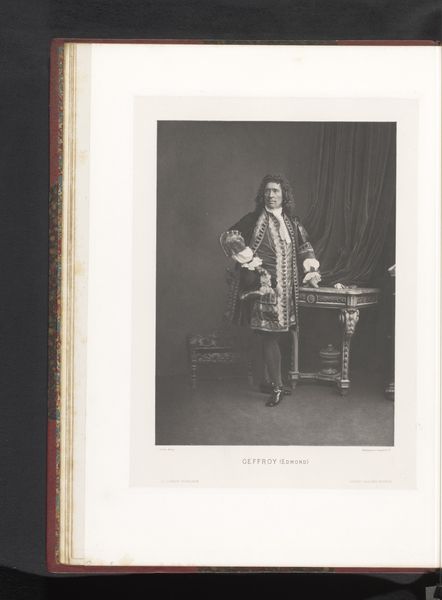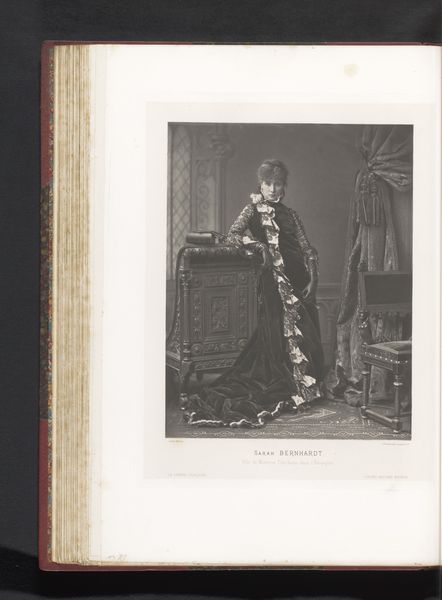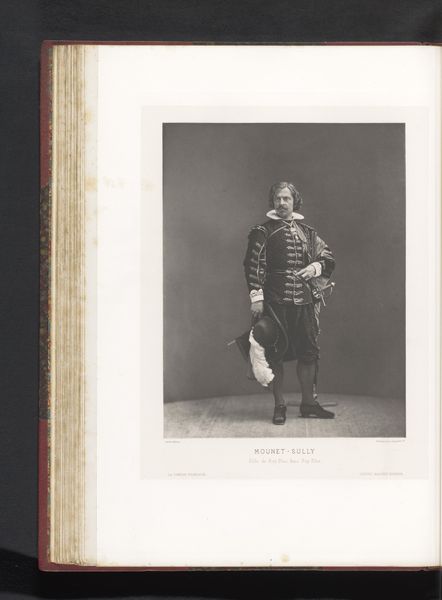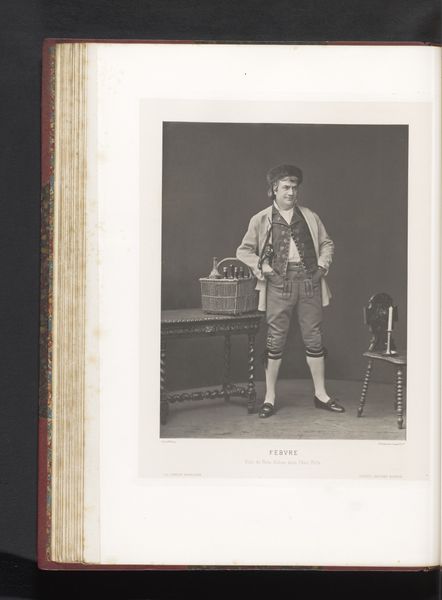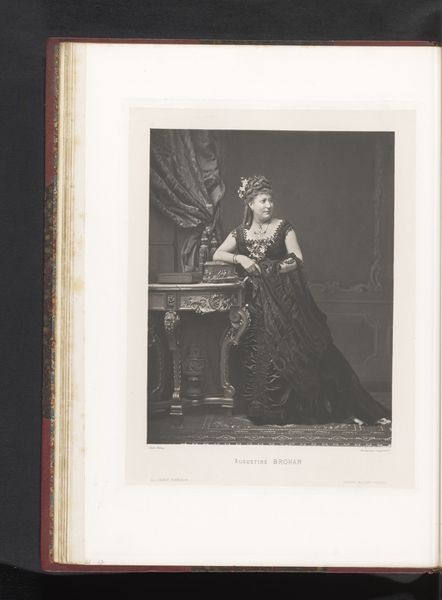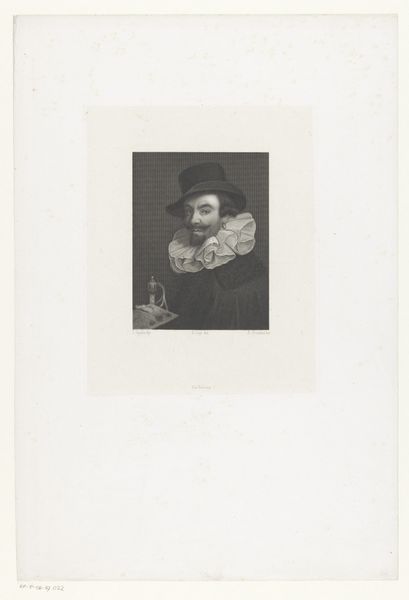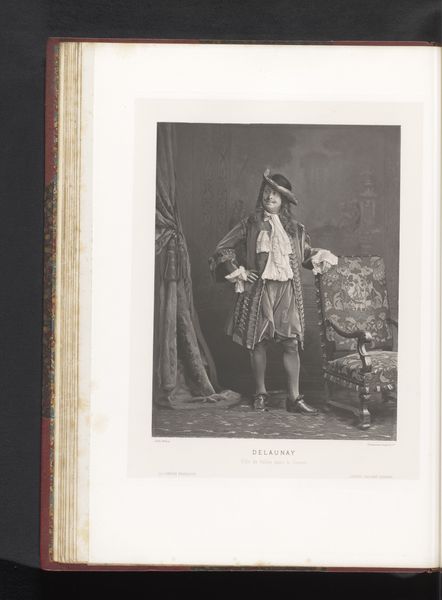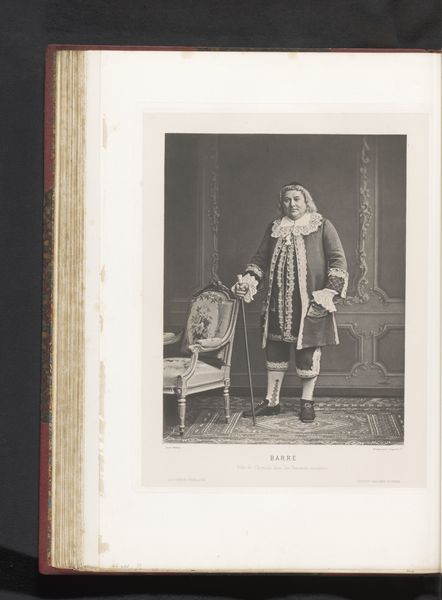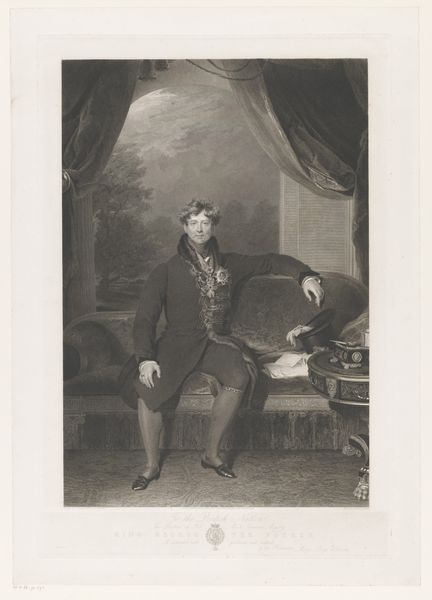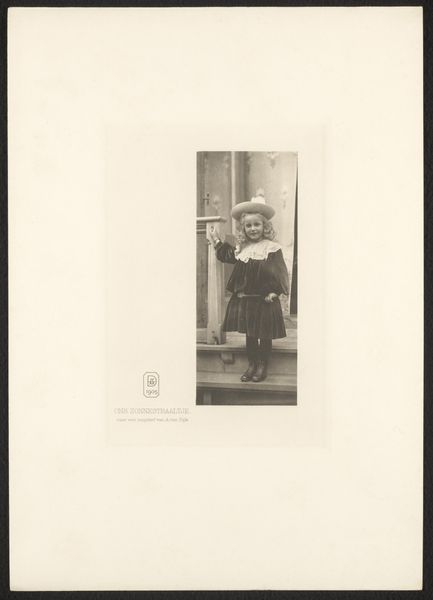
Portret van Gustave Worms in de rol van Célio in Les Caprices de Marianne before 1880
0:00
0:00
print, photography
#
portrait
# print
#
photography
#
academic-art
Dimensions: height 260 mm, width 207 mm
Copyright: Rijks Museum: Open Domain
Curator: Before us we have a fascinating piece, a photograph dating from before 1880. It’s entitled "Portret van Gustave Worms in de rol van Célio in Les Caprices de Marianne", and as you can guess is housed here at the Rijksmuseum. Editor: Okay, my first thought is how theatrical it feels. Almost staged, right? I can't help but think about the artificiality of it all, even down to the overly ornate chair propping up our actor. It’s like a frozen moment from a play. Curator: Exactly! This piece showcases Worms in character. These sorts of actor portraits were pretty common at the time; a form of publicity, really. Notice how the lighting and background seem designed to spotlight him. Editor: Absolutely, spotlight’s on! He’s got this serious look, but the whole thing kind of has this melancholic, almost ironic air. It is black and white, but even in a contemporary painting in full color it's still somber and slightly detached. Curator: Indeed, these portraits were also intended to capture something of the actor's interpretation of the role itself. We can analyze what this portrayal contributes to how Worms sought to be publicly received both as himself and as the embodiment of Celio. The Academic Art influence here aims for respectability, contributing to the period’s efforts to legitimize theater and acting as serious arts. Editor: True, but doesn’t it also reinforce the separation? I mean, we're looking *at* him, but we're not *with* him. It's this perfect, distanced image. And think about how different this is than a contemporary Instagram photo! What are the political implications of those aesthetic choices? The theatrical, the academic… Curator: Precisely. It speaks volumes about how social stature and art are linked in creating perceptions, shaping audience expectations, and embedding them within a structured societal hierarchy. This image isn't merely a snapshot; it’s a construction meant to mold and influence its viewers. Editor: So we're not just admiring a photo of an actor. We're actually observing a carefully crafted representation, where the personal intersects with political motives—quite intriguing if you think of the broader implications on media even to this day! Curator: Yes, looking through a sociohistorical lens shows the deep connection between the performing arts and social identity of its time, emphasizing its continuing power and influence. Editor: Well, next time I'm struggling to capture the perfect selfie, I'll think of Monsieur Worms. A perfectly constructed character... fascinating and somewhat sobering!
Comments
No comments
Be the first to comment and join the conversation on the ultimate creative platform.
